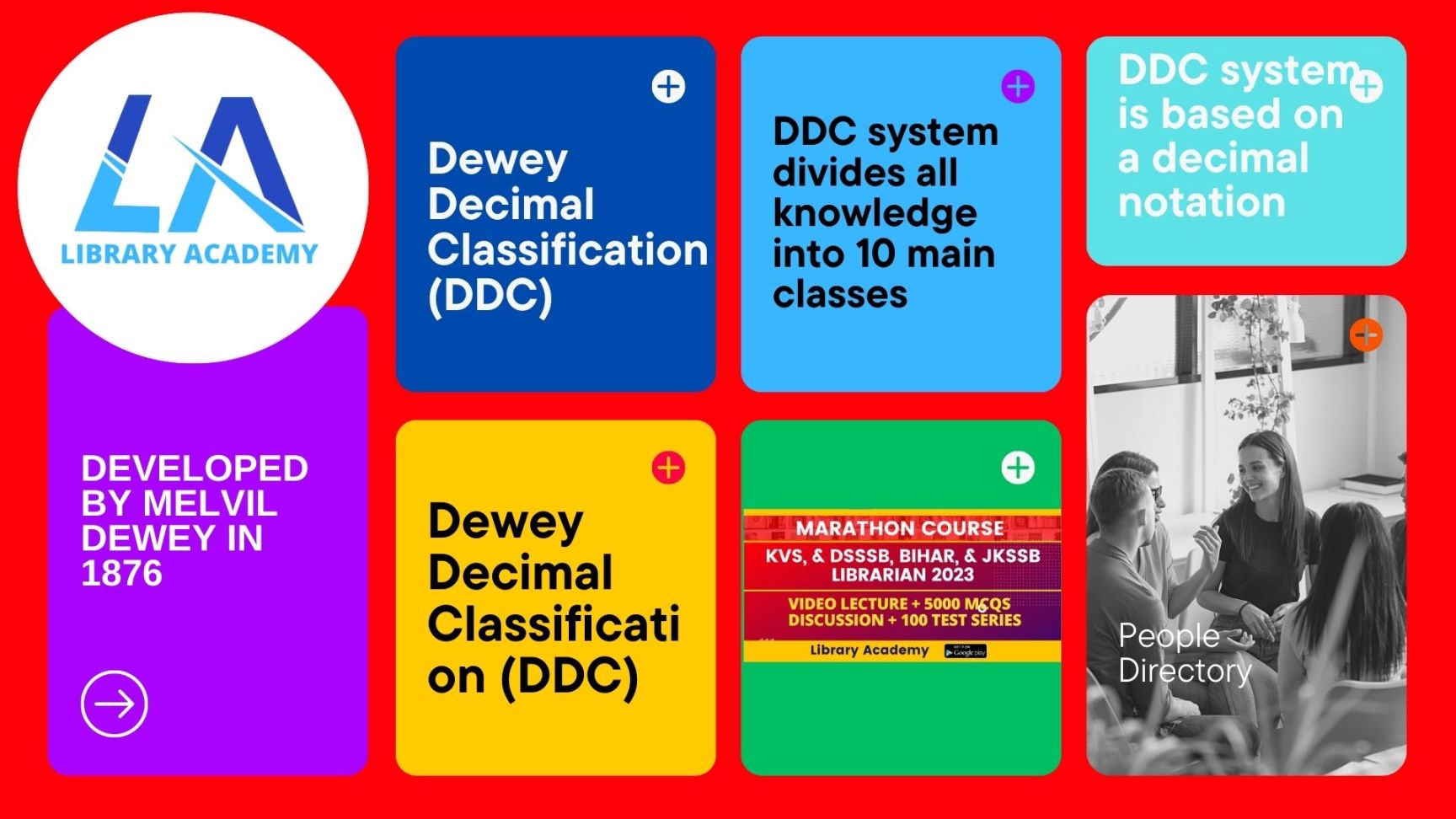Dewey Decimal Classification (DDC) | DDC Classification System
The Dewey Decimal Classification (DDC) system is a widely used library classification system that categorizes books and other library materials according to the subject. DDC was first developed by Melvil Dewey in 1876 and has since undergone numerous revisions and updates.
The DDC system is based on a decimal notation in which each book is assigned a unique numerical code that reflects its subject. The code consists of three parts: the class number, which indicates the broad subject area; the division number, which further specifies the subject; and the section number, which represents the specific topic.
The DDC system divides all knowledge into 10 main classes:
0 - General works
1 - Philosophy and psychology
2 - Religion
3 - Social sciences
4 - Language
5 - Natural sciences and mathematics
6 - Technology
7 - Arts and recreation
8 - Literature
9 - History and geography
Each main class is further subdivided into smaller divisions, each with its own unique number. For example, the social sciences class (3) is subdivided into economics (33), sociology (301), and political science (320).
The DDC system is used by libraries all over the world and is available in multiple languages. It is designed to be flexible and adaptable, allowing libraries to easily add new materials and adjust their collections to meet changing needs.
The Dewey Decimal Classification (DDC) system is divided into the following levels of subdivisions:
Main classes: The DDC system has 10 main classes, which are numbered from 0 to 9. These main classes represent broad subject areas such as general works, philosophy, religion, social sciences, language, natural sciences, technology, arts, literature, and history.
Divisions: Each main class is further divided into 10 divisions, which are represented by two-digit numbers. For example, division 50 represents mathematics, while division 70 represents the arts.
Sections: Each division is further divided into sections, which are represented by three-digit numbers. For example, section 530 represents physics, while section 740 represents graphic arts and decorative arts.
Subsections: In some cases, sections may be further divided into subsections, which are represented by four-digit numbers. For example, subsection 821.111 represents English poetry written by William Shakespeare.
Further subdivisions: In addition to these four levels of subdivisions, the DDC system also allows for further subdivisions based on geographic location, language, time period, or other specific criteria. These further subdivisions are represented by additional digits beyond the four-digit level.
The DDC system is designed to be flexible and adaptable, allowing libraries to easily add new materials and adjust their collections to meet changing needs. The system's hierarchical structure allows for easy navigation and browsing of library materials, making it a valuable tool for researchers, students, and library professionals alike.
Download UGC NET Library & Information Science Syllabus 2023: Click Here
Download the Library Academy App: Click Here
Subscribe YouTue Channel: Click here


Post a Comment